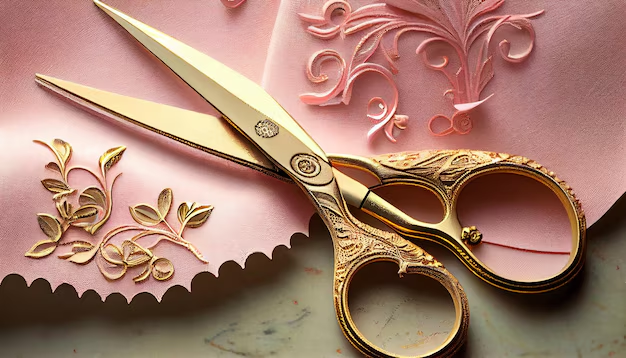Everyday objects often go unnoticed in the hustle and bustle of our lives. However, many of these items come with fascinating histories and surprisin
Everyday objects often go unnoticed in the hustle and bustle of our lives. However, many of these items come with fascinating histories and surprising functionalities that can make you appreciate them more. Here are ten weird facts about everyday objects that might just blow your mind!
1. True Facts – The Humble Pencil

Did you know that a single pencil can draw a line that is about 35 miles long? The graphite used in pencils is not pure carbon but a mix of graphite and clay, which gives it its distinctive texture and flexibility. This means that a typical pencil can write for a long time, making it an efficient tool for artists and writers!
2. Facts says that Toothbrushes Have a Shorter Lifespan Than You Think

Most people use a toothbrush for about three months before replacing it, but did you know that toothbrushes can harbor bacteria? Studies show that toothbrushes can be a breeding ground for harmful microorganisms, especially if they’re stored near the toilet. To maintain good dental hygiene, it’s best to replace your toothbrush every three to four months and store it in a clean, dry place.
3. Facts are The Evolution of the Umbrella

Umbrellas have been around for thousands of years, originally used by ancient Egyptians and Greeks for shade from the sun rather than rain. The first known use of umbrellas as rain protection dates back to the 11th century in China. Today, we can’t imagine a rainy day without them, but it’s fascinating to think about their original purpose!
4. Sticky Notes Were Rarely Created

The iconic sticky note we all love today was invented by accident! In 1968, a scientist named Spencer Silver was trying to create a super-strong adhesive but ended up with a weak one instead. It wasn’t until several years later that his colleague Arthur Fry realized the potential for bookmarks that wouldn’t slip out. And so, the Post-it Note was born!
5. Ballpoint Pens and Their Invention Facts Stated

While we might take ballpoint pens for granted today, they revolutionized writing in the 20th century. Invented in 1938 by Laszlo Biro, these pens were designed to replace fountain pens. Interestingly, they work by using a tiny ball bearing that rolls ink onto the paper, preventing smudging. Biro’s invention was so impactful that he is often credited with saving time and promoting legibility in writing.
6. The T-Shirt’s Origin

The t-shirt has a rich history that goes back to the late 19th century when it was first used as an undergarment for men. However, it wasn’t until World War II that it became a symbol of casual wear. Soldiers wore them under their uniforms, and the trend caught on. Today, t-shirts are not only a staple in our wardrobes but also a canvas for self-expression through graphic designs.
7. Factually The Surprising History of Scissors

Scissors are not just practical tools; they have an interesting history too! The first known scissors were created around 1500 B.C. in ancient Egypt, made from two bronze blades joined at a pivot. Over time, scissors evolved into the modern designs we use today, but their fundamental function remains the same. Interestingly, left-handed scissors are designed differently to accommodate left-handed users, demonstrating the tool’s adaptability!
8. Doorknobs and Their Design

Most people don’t think twice about doorknobs, but their design has practical implications. The first doorknobs appeared in the 19th century, and they were initially designed for privacy. Interestingly, studies show that round doorknobs are more hygienic than lever handles because they are less likely to trap bacteria and dirt. This means that switching to round knobs might improve your home’s cleanliness!
9. The Hidden Life of Coins

Coins are more than just currency; they have a surprising lifespan! In the U.S., a quarter has a lifespan of about 30 years, while pennies can last even longer. This durability is due to their metallic composition. Interestingly, coins can also harbor more germs than a toilet seat, making them some of the dirtiest everyday objects we handle. It’s a good reminder to wash your hands after dealing with cash!
10. The Fascinating World of Paper Clips

Paper clips might seem trivial, but they have a unique story. The modern paper clip, patented in 1899 by William Middlebrook, was originally designed to hold multiple sheets of paper together without causing damage. Interestingly, the original design was based on a simple loop, which remains largely unchanged today. What’s more, paper clips have been used creatively for various purposes, including as makeshift tools and even jewelry!
Conclusion
Everyday objects may seem mundane, but they carry intriguing stories and unique functionalities that often go unnoticed. From the accidental creation of sticky notes to the resilient design of t-shirts and doorknobs, these items shape our daily lives in remarkable ways. Next time you pick up a pencil or use a pair of scissors, take a moment to appreciate the fascinating history and quirks behind these commonplace items!
By exploring the unexpected facts about everyday objects, you can enrich your understanding of the world around you. Who knows, you might even impress your friends with your newfound knowledge!

COMMENTS